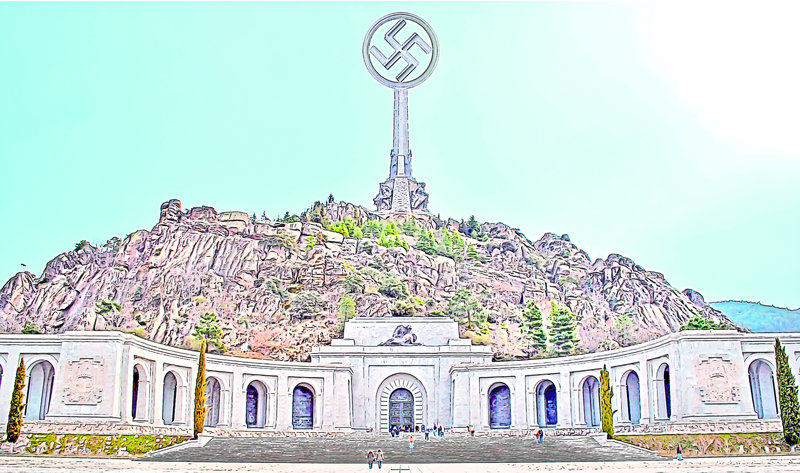THE CULTURAL TIGHTROPE
A DIFFERENT APPROACH TO HISTORY
We decided to have a change of atmosphere over the Christmas holidays in an attempt to escape the toxic environment created by the despicable implementation of Article 155 in this part of the world. As my wife and I both lived in Germany in our younger days, a return has been in the offing for many years now. My wife spent much of her twenties in southern Germany, while I lived at various stages in Kiel, Regensburg and Ingolstadt (the home of Audi), so we’ve been itching to have a family trip to Germany and settle the dispute over who speaks better German (the jury is still out on that one). In the end, we decided to go to Berlin for five days, not least due to its history and character and wanting our son to have some contact with what is one of the most emblematic cities in modern European history.
I’ll come to the history later, but first I’d like to mention the cultural delights of the typical German Christmas market. Spending some time sipping Glühwein and munching on Currywurst at the community tables in the market reminded me of my youth and a culture where sharing drinks, smiles and easy conversation with strangers is so much more commonplace than it is here. That feeling of friendliness and openness to strangers is, whether we like it or not, not a typical cultural trait here, and if you ever want to experience it firsthand, you can’t do much better than a German Christmas market, where the atmosphere is festive, friendly and fun.
As for the historical part, we booked a local guide for a private tour of Berlin, focusing on its World War II past. Aside from the natural fascination of such a tour, for us there was also the comparison of how Germany deals with its past compared to certain other European nations. The tour guide, who was not in fact German, made a big deal about how the Germans have accepted their role in WW II and the atrocities of the Holocaust and have permanent testament to it on display in the museums and memorials dotted around Berlin.
These places naturally leave a very deep impression on any visitor after experiencing the Memorial to the Murdered Jews of Europe and the museum that accompanies it, which houses physical evidence of the horrific circumstances endured by Jewish families separated by the Nazi regime and deported to camps where so many met their deaths. To have a constant reminder of that in the very heart of Germany’s capital city, where so many tourists congregate each day of the year, shows a true commitment to atonement. And when you consider the way in which Spanish politicians have continuously contrived to block those citizens seeking information about relatives lost in the Civil War, the resistance to the digging up of mass graves and the repulsive homage to Franco that is the Valley of the Fallen, which costs taxpayers €750,000 a year to maintain by the way, then you can but despair at the comparison .


